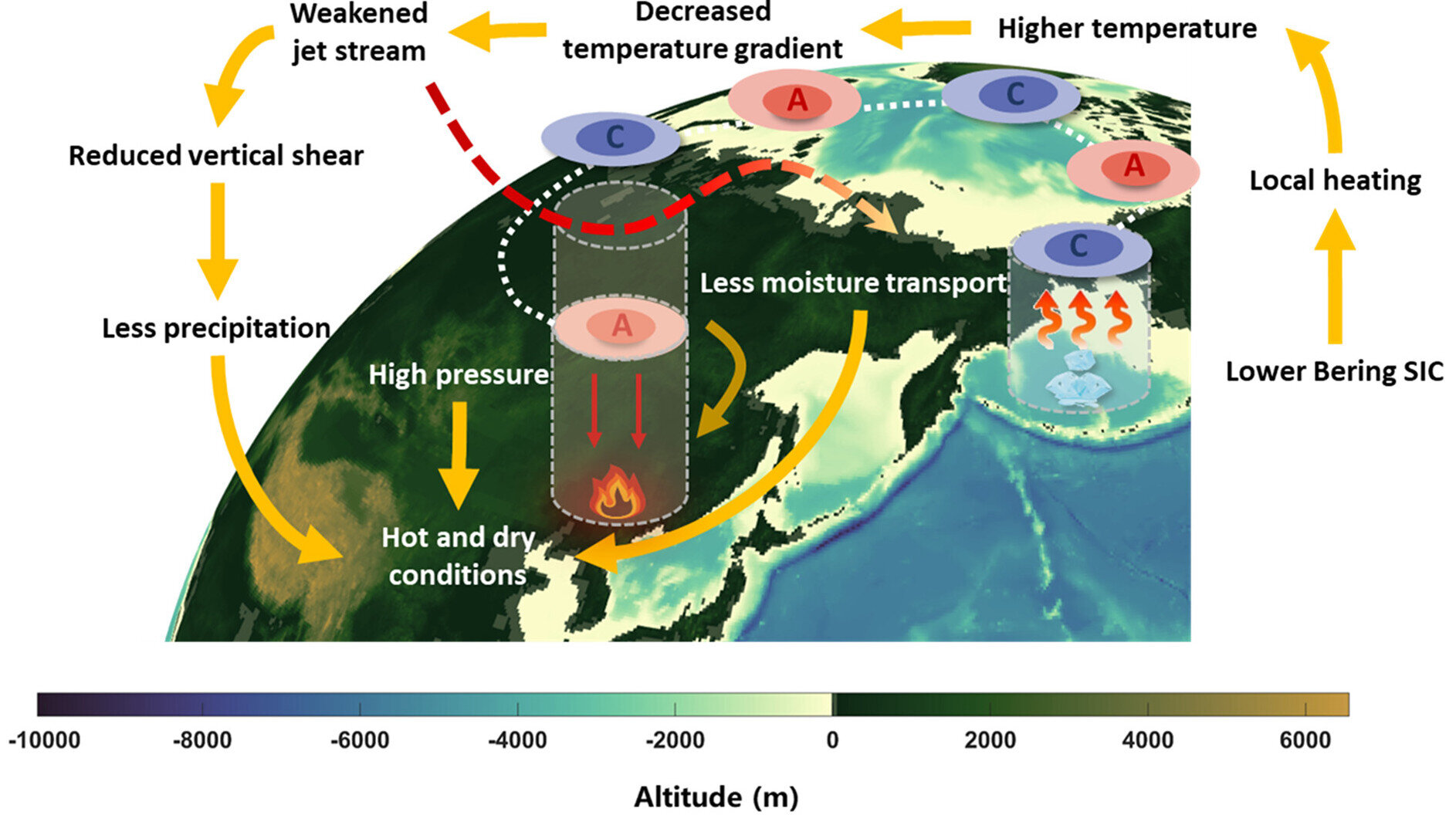China has been making impressive progress in reducing air pollution, implementing measures such as installing filters in coal-fired power stations to combat harmful emissions. Their Air Pollution Control Act is also aimed at addressing pollution from various sources, including manufacturing, vehicles, and agriculture. Additionally, China has set a goal to become carbon neutral by 2060.
However, despite these efforts, the northeast region of China has seen a concerning increase in polluting emissions over the past decade. This rise can be attributed to both natural and human-induced wildfires, as well as the resulting biomass burning. Shockingly, this area is home to some of China’s most diverse and important tree coverage, making it a critical ecosystem under threat.
New research published in Geophysical Research Letters sheds light on the cause of these wildfires. The study reveals a link between the decline in sea ice moving from the Arctic to the Bering Sea and the increased occurrence of fires during the boreal spring. Scientists from Peking University in China used climate model simulations and observational data to understand this connection and identified the intensification of fire hazards as a result of continued global warming.
The research team analyzed meteorological data from the past four decades to identify weather changes conducive to wildfire events. They also examined data on smoke concentrations and fire radiative power. Through their modeling, they discovered a one-month lag between the disruption of Bering Sea ice and the presence of wildfires. This lag may be influenced by ice albedo feedbacks, where the reflection or absorption of solar radiation by ice or sea water impacts the surrounding environment, leading to further melting of sea ice.
The decline in sea ice during winter, caused by the decrease in Bering Sea ice, results in reduced precipitation and warmer temperatures in northeast China. Unusual northwesterly wind patterns and the formation of high-pressure centers with downward-directed airflow create hot and dry conditions, making the region susceptible to rapid wildfire spread. Global-scale climate patterns, such as the El-Niño Southern Oscillation and Pacific Decadal Oscillation, further exacerbate these conditions, increasing the likelihood of drought and wildfires.
Looking ahead, under the most extreme climate scenario, the research team predicts a clear pattern of continued Bering Sea ice decline and an increase in wildfires in northeast China. Even under lower radiative forcing scenarios, the occurrence of wildfires remains higher than historical measurements. With the disappearance of Arctic sea ice concentration predicted by the 2050s, the urgency to implement effective management strategies to combat frequent and damaging wildfires is paramount, regardless of the level of climate change forcing.








